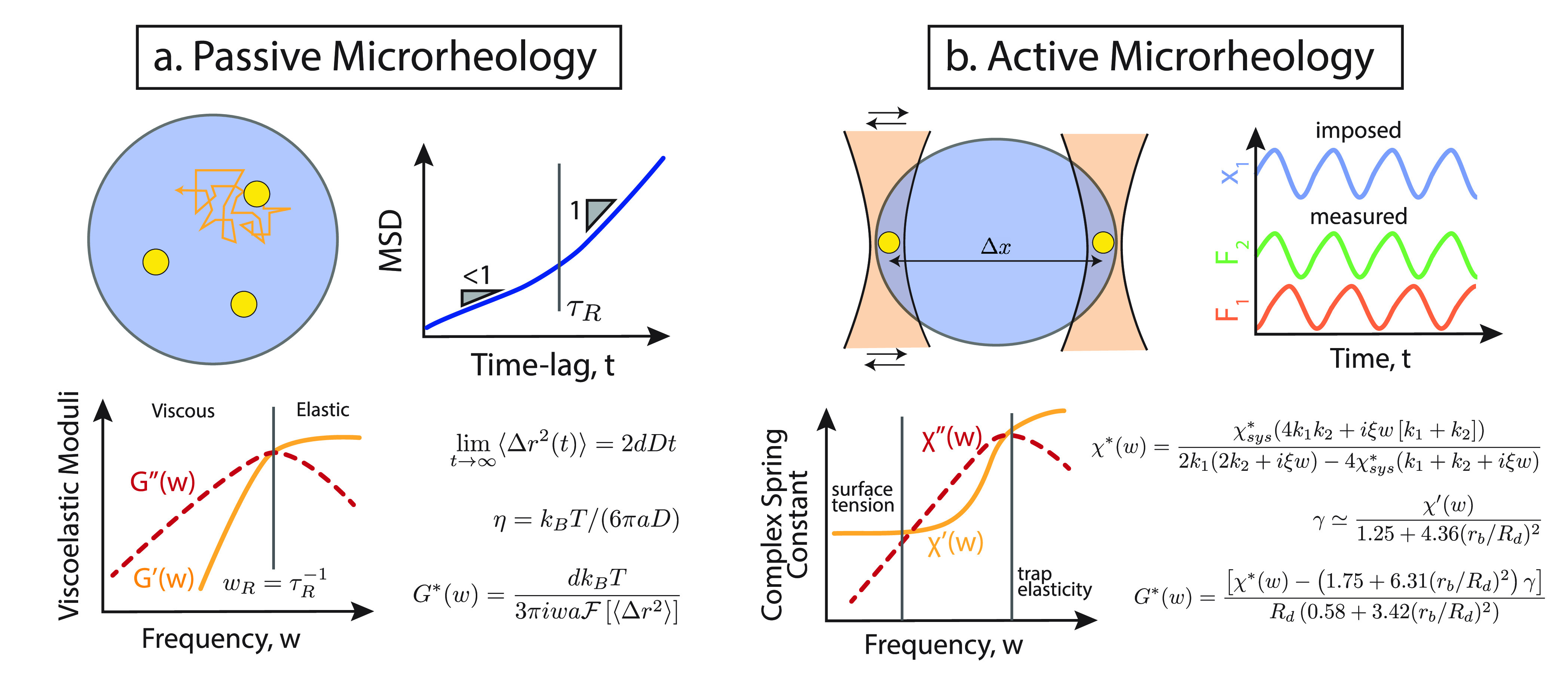Figure 3.

Microrheology of condensates. (a) Passive microrheology is performed by tracking the position of probe particles within a condensate. From the mean squared displacement, ⟨Δr2(t)⟩, one can obtain the elastic and viscous moduli G′, G″ which in turn quantify the full viscoelastic spectrum of the condensate and its viscous and elastic components as a function of deformation frequency. (b) Active microrheology is performed by trapping beads within a condensate and using them as “handles” to apply an oscillatory stress to the droplet. The complex and frequency dependent spring constant of the droplet can be computed by measuring the distance of, and forces experienced by, the particles as a function of the frequency of oscillations.
